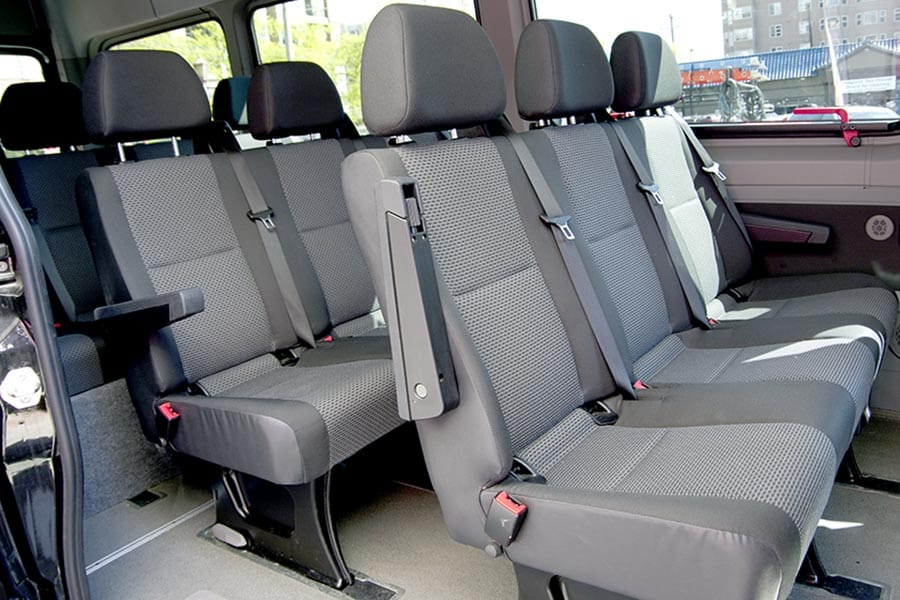
Are you in the market for a van but don’t know if you should get a cargo or passenger van? Deciding what vehicle is best suited for your needs can be hard.
Both vans have unique benefits, so it’s beneficial to understand their differences before making your decision. In this post, we’ll take an in-depth look at the differences between cargo and passenger vans so you can choose the one that’s right for you.
Cargo and Passenger Vans: How Do They Differ?
Cargo and passenger vans are similar vehicles designed for different purposes, whether for work or recreational activities; understanding the differences between these vehicles can help you make an informed decision.
1. Purpose
When it comes to cargo vans, the most significant difference is their purpose. Cargo vans tend to be larger and have a taller roof to accommodate larger items. They are typically used for commercial purposes.
They have large interior spaces with plenty of room for shelving or racks, making them great for hauling large amounts of supplies. Additionally, they can be equipped with features like power outlets and a foldable ramp for easier loading and unloading.
On the other hand, passenger vans transport people from one place to another. Therefore, they typically have comfortable seating arrangements that can accommodate a larger group of passengers, making them great for family trips or business outings.
Passenger vans may also feature additional amenities like tinted windows, DVD players, and Bluetooth audio for added comfort.
2. Seating
Cargo vans maximize storage space; they typically have two front seats and a large unfinished cargo area in the back for payload, which can be used for transporting items.
Some cargo vans may also have additional seating, such as a passenger bench seat, but this is usually an optional extra that the owner can add at an extra cost. Windows in the cargo area are limited, with usually only rear windows.

In contrast, passenger vans seat more people, with multiple rows of seating available in some models. The seating makes them a better choice for families or groups transporting more individuals between locations.
In addition, these vehicles have a finished interior and usually have windows all around so passengers can see out, making them more suitable for longer journeys.
3. Interior Space
Cargo vans are great for transporting large items or equipment from one place to another. This ability is because they generally have higher roofs and more cargo space than passenger vans, maximizing interior space for hauling goods and equipment. Cargo vans may not have many amenities but prioritize functionality, with only the basics, such as air conditioning, often included.

In contrast, passenger vans prioritize the comfort and convenience of passengers. Therefore, they typically have additional features like air conditioning, entertainment systems, comfortable seating, and more. As a result, passenger vans offer a pleasurable and enjoyable journey for people traveling between destinations.
4. Payload Capacity
Cargo vans can usually carry heavier loads, meaning they typically have a higher payload capacity than passenger vans. This fact makes them an ideal choice for tasks that require transporting larger and heavier items, such as equipment or furniture, and they have anchor points such as D rings to tie down cargo.
In contrast, passenger vans carry people and their luggage. As a result, they have a lower weight capacity, and with the bench seating, hauling cargo is less feasible. Therefore, they’re better suited for transporting passengers between destinations than carrying a heavier load.
Other Posts of Interest
- Are Sprinter Vans Worth The Money?
- Do Camper Vans Hold Their Value?
- Are RAM ProMaster Vans Reliable?
- Do Sprinter Vans Hold Their Value?
5. Handling and Performance
Cargo vans typically have a more rugged suspension and a more powerful engine than passenger vans. The heavier suspension is because cargo vans are often used for commercial purposes and need to be able to haul heavy loads. As such, they may not provide the same level of comfort as passenger vans, but their enhanced engine power and suspension ensure they can get the job done efficiently.
In contrast, passenger vans prioritize comfort and safety above all else. To this end, they feature smoother suspensions and better safety features to provide a comfortable journey for passengers. However, while these features make for a smoother ride, this comes at the expense of reduced payload capacity compared to cargo vans.
So in review, cargo vans typically have a higher payload capacity and are designed to handle larger and heavier items. Passenger vans have lower weight capacity, smoother suspensions, and better safety features. Cargo vans are more suitable for transporting goods, while passenger vans are better suited for carrying people.
How Much Weight Can a Cargo Van Carry?
Cargo vans can accommodate loads of varying weights and sizes. Therefore, the capacity varies according to the model and size of the vehicle as well as the weight and distribution of the cargo being carried. Generally, a small cargo van can carry up to 1,500 pounds, while larger models can handle up to 5,000 pounds or more.

For optimal safety and stability, assessing the potential load weight so that it does not exceed the vehicle’s maximum capacity is crucial. Consider how evenly distributed or balanced the load is so that it does not create an imbalance that could affect handling and stability.
Before selecting a particular model, consider the Gross Vehicle Weight Rating (GVWR) and Gross Combined Weight Rating (GCWR). The GVWR indicates the maximum combined weight of both the cargo van and its payload, while the GCWR is the total combined weight limit when adding any towed vehicles.
The load capacity of a cargo van also depends on other factors, such as its wheelbase length and engine size, which can help determine how much it can safely carry. Additionally, some models include modifications like increased suspension for added stability when hauling heavier loads.
How Many People Does a Passenger Van Hold?
Passenger vans can be configured to accommodate anywhere from 6 to 15 passengers and usually feature two or three rows of bench seats. The precise number of individuals a passenger van can transport varies, determined by factors such as the number of seats, luggage storage space, and travelers’ weight, including their belongings.
It is important to mention that local laws and regulations may limit the maximum number of passengers allowed in a van, and you should also check the type of driver’s license required for the number of people.
Contrasting Capabilities
When deciding between a cargo van and a passenger van, consider the primary purpose of your vehicle. Cargo vans are ideal if you’re looking for a reliable way to transport goods or supplies. Passenger vans are great if you need to move around a larger group of people, like a sports team or a large family. Ultimately, the best van for you will depend on your unique needs and preferences.





